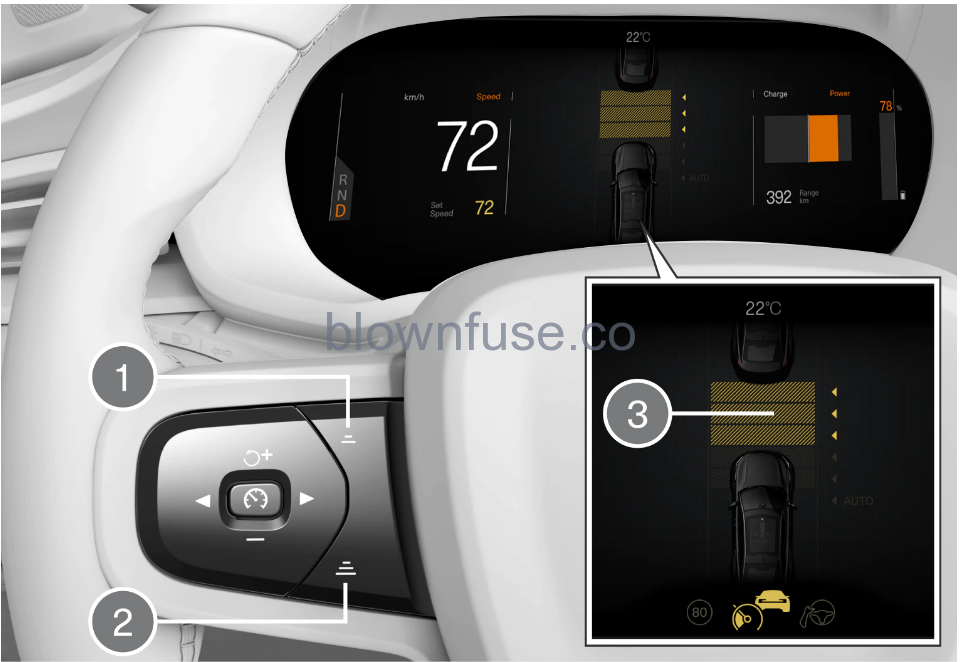2022 Polestar 2 Distance Alert

Collision risk warning from speed-controlling functions
Collision warning audible signal and symbol
- Collision warning audible signal
- Collision warning symbol
- Camera and radar sensor distance monitoring
Adaptive Cruise Control and Pilot Assist use approx. 40% of the braking capacity. If a situation requires more braking force than driver support can provide, and if the driver does not apply the brakes, a warning light and audible warning signal will be activated to alert the driver that immediate action is required.
The driver support system only issues a warning for vehicles detected by its radar unit – thus, a warning may come after a delay or not at all. Never wait for a warning. Apply the brakes when necessary.+
Setting time interval to the vehicle ahead
 Controls for setting a time interval.
Controls for setting a time interval.- Reduce the time interval
- Increase the time interval
- Distance indicator
- Press the (1) or (2) button to decrease or increase the time interval.
> The distance indicator (3) shows the current time interval.
Different time intervals to the vehicle ahead can be selected and are shown in the instrument panel as 1–5 horizontal bars. The more bars, the longer the time interval. One bar represents an interval of approx. 1 second to the vehicle ahead. 5 bars represents approx. 3 seconds.
In order to help your vehicle follow the vehicle ahead as smoothly and comfortably as possible, Adaptive Cruise Control allows the time interval to vary noticeably in certain situations. At low speeds, when the distance to the vehicle ahead is short, Adaptive Cruise Control increases the time interval slightly.
When the symbol in the instrument panel shows a vehicle and a steering wheel, Pilot Assist is following a vehicle ahead at a preset time interval.
When only a steering wheel is shown, there is no vehicle ahead within a reasonable distance.
When the symbol in the instrument panel shows two vehicles, the Adaptive Cruise Control is following the vehicle ahead at a preset time interval.
When only one vehicle is shown, there is no vehicle ahead within a reasonable distance.
- The greater the vehicles’ speed, the greater the distance between them for a set time interval.
- Only use the time intervals permitted by local traffic regulations.
- If driver support does not seem to respond with a speed increase when activated, it may be because the time interval to the vehicle ahead is shorter than the set time interval.
- Only use a time interval suitable for the current traffic conditions.
- The driver should be aware that short time intervals give them limited time to react and act to any unforeseen traffic situation.

